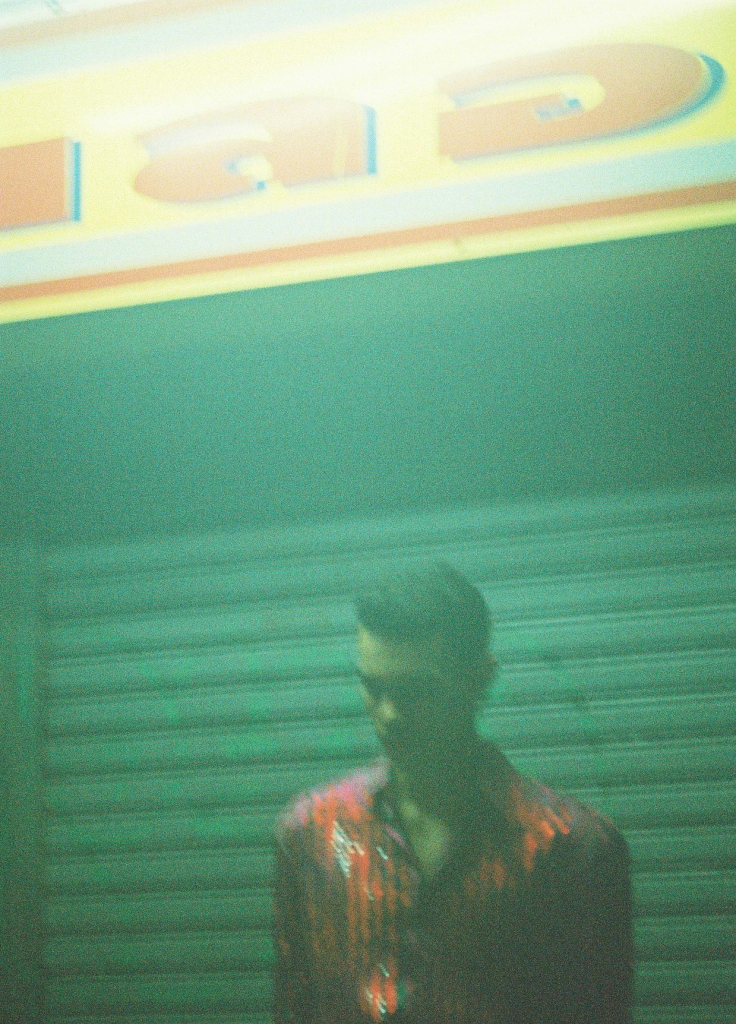
When Thai designer Rukpong Raimaturapong took part in his first-ever fashion competition, Thailand’s Contemporary Fashion Contest in 2013, he won first runner-up, giving him the impetus to kick start his career in fashion. “I liked the experience, so I kind of kept doing it, “ he says. “So I would say I began doing fashion just by experimenting and competing and just really expressing what I had in my head onto fashion as a medium.”
In the following years, Raimaturapong would go on to hone his skills at various other competitions, before moving to Paris and taking part in the prestigious Festival de Hyères in 2021, where his colourful, dopamine-inducing designs that referenced the vibrance of Bangkok earned him top honours. The designer sat down with GRAZIA Singapore editor-in-chief Pakkee Tan to discuss the deep influence of his birthplace Thailand on his designs, the latent meaning of colour in his work and giving traditional crafts a new attitude for a new generation.
You’ve mentioned that your birthplace Thailand is a constant source of inspiration for you. What are the ways that the country has influenced your work?
Rukpong Raimaturapong (RR): Growing up in Thailand, it shaped a lot of the way that I see things. Visually, Bangkok is a very eclectic city in terms of the architecture, and the way that things are on the street—the street scene is quite messy, I would say. It inspired me a lot in the way that I see and mix different textures and materials, and also in the way that things are being constructed. As a nation, we like to improvise things and it reflects a lot in the way that I construct my garments—for example, I could include details that are built on the body. It’s shaped the way that I see the clothes, and also how it visually speaks to me on the body.
There’s a sense of joy and exuberance that I find so compelling when I look at your work- is that something that you consciously infuse in all your designs? How and why do you choose to do so?
RR: I think my sense of colour is something that’s natural. Like I mentioned, the Thai environment [that I grew up in] is very colourful—we don’t really control our sense of color anywhere. So naturally, it’s embedded in the way I mix and see colors. It reflects in the colour choices that I choose—most of the tones that I picked so far have been very vibrant and happy—but there are also some hidden messages that I tried to put in the collections that I’ve done. It speaks about social class: it’s reflected in the different types of materials, and how it represents different classes of people in Thai society. Colour may represent this festive and positive vibe, but there are some religious and some social messages tied to them too.
I find that your use of Thai silk to be such a beautiful incorporation of traditional Thai elements in your work. Why did you choose to do so?
RR: Actually, I use Thai silk because in the first competition that I did, we had to use Thai silk in our designs. So my first experience with fashion was with this material. And when I look back, I remember on my mum’s side of the family, we were weavers, so maybe genetically, it’s embedded [in me]. When I was growing up, I would see silkworms at my grandma’s house and I didn’t really know what they were! So it’s a material that has always been there [in my life]. And then living in Paris, when I was doing the collection for the Hyères International Festival of Fashion, I realised the potential of this fabric is endless. You know, you can cut, you can dye, you can do indigo [with it]—there are many techniques that you can explore. There’s also the social side of this material. It’s a secondary income for farmers, because weaving is something that Thai farmers do when they wait for their rice crops to grow. So in a way there is this pool of weavers that are available in the market and I’d like to kind of change the perception of how this very traditional know-how and savoir faire can be explored. It’s something that I’ve tried to do with my work and ask different questions of how and what this material can be.
Thailand also has such a rich history of craftsmanship. Are there any other traditional Thai crafts that you are experimenting with or looking to build into your work?
RR: With the collection that I’m working on, I discovered that up until the ’90s, Thai people still went to tailors to get their clothes made. So with this collection that I’m making right now, I’m sourcing tailors from the ’80s and ’90s. I’m discovering different shops from locations within Bangkok and I’m realising there’s a true sense of tailoring within Thai menswear. Going to meet them and seeing what they like to do and, and you know, bringing back that sense of tailoring and working with many veterans—it’s been a learning experience communicating with them and seeing how seeing where they can take me and also, you know how I can push my sensibility in their way of constructing garments. It’s been quite an interesting experience working with another generation who has another mindset.




Read More: A Stylist’s Take: The Long Game
